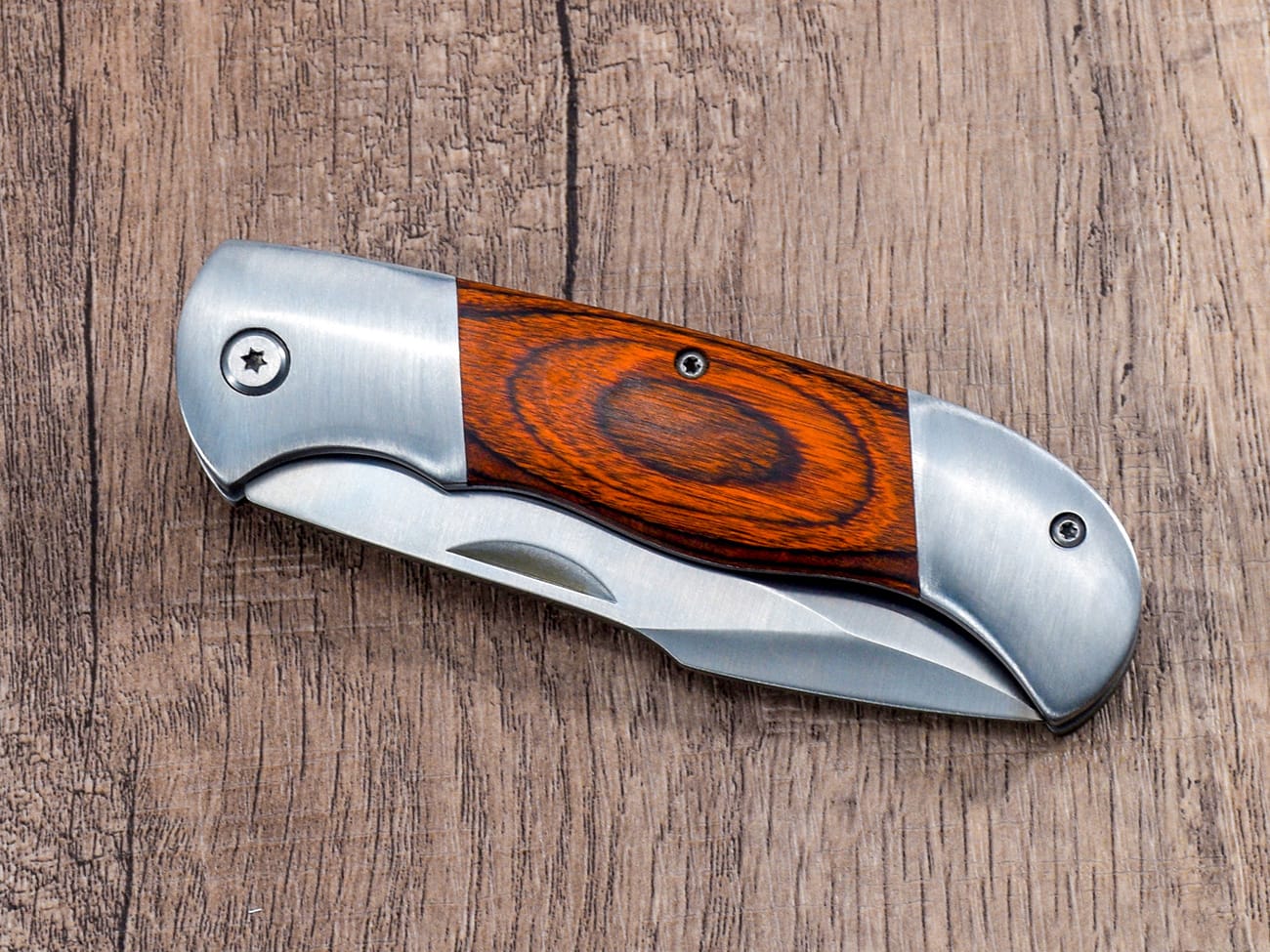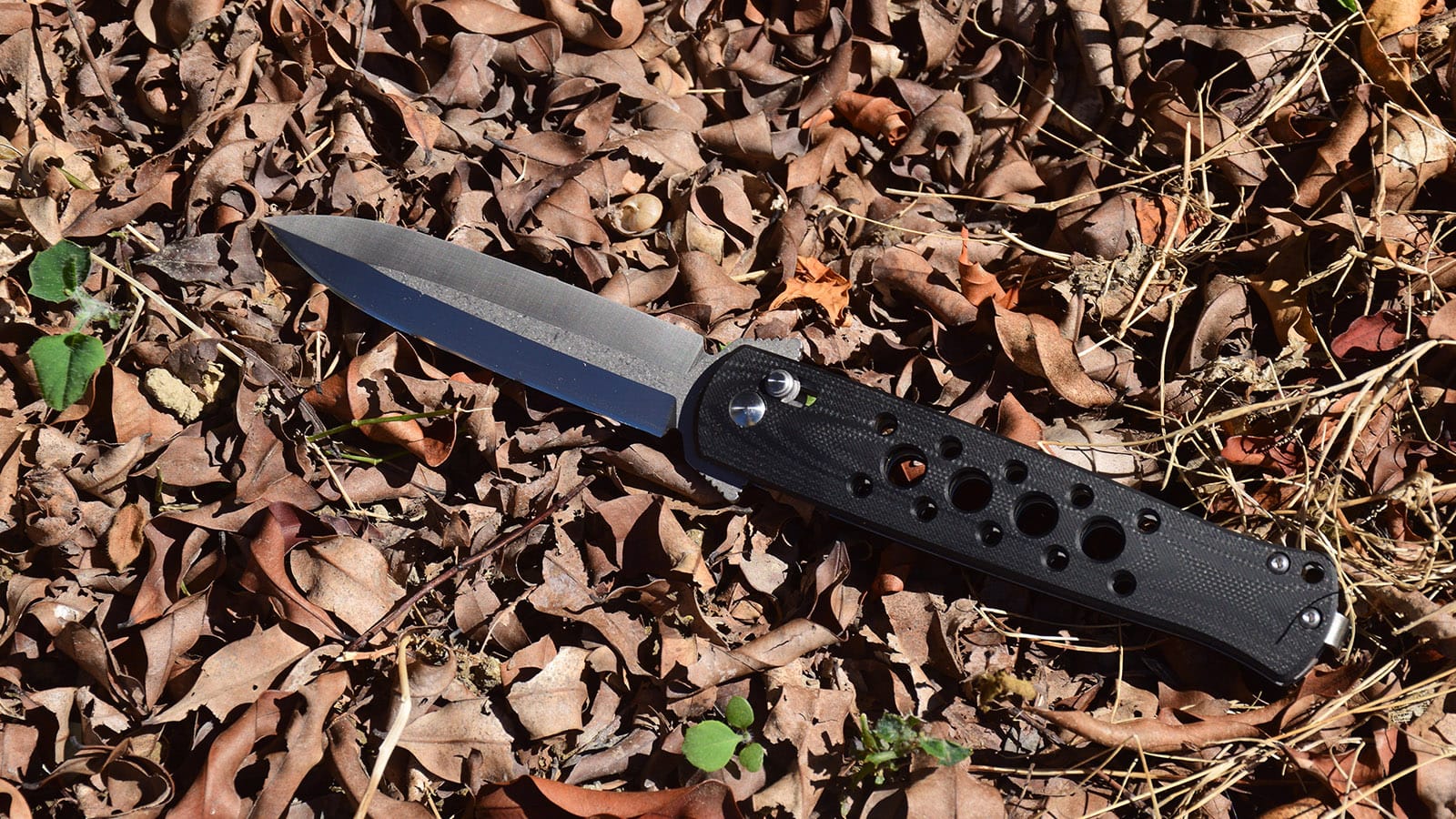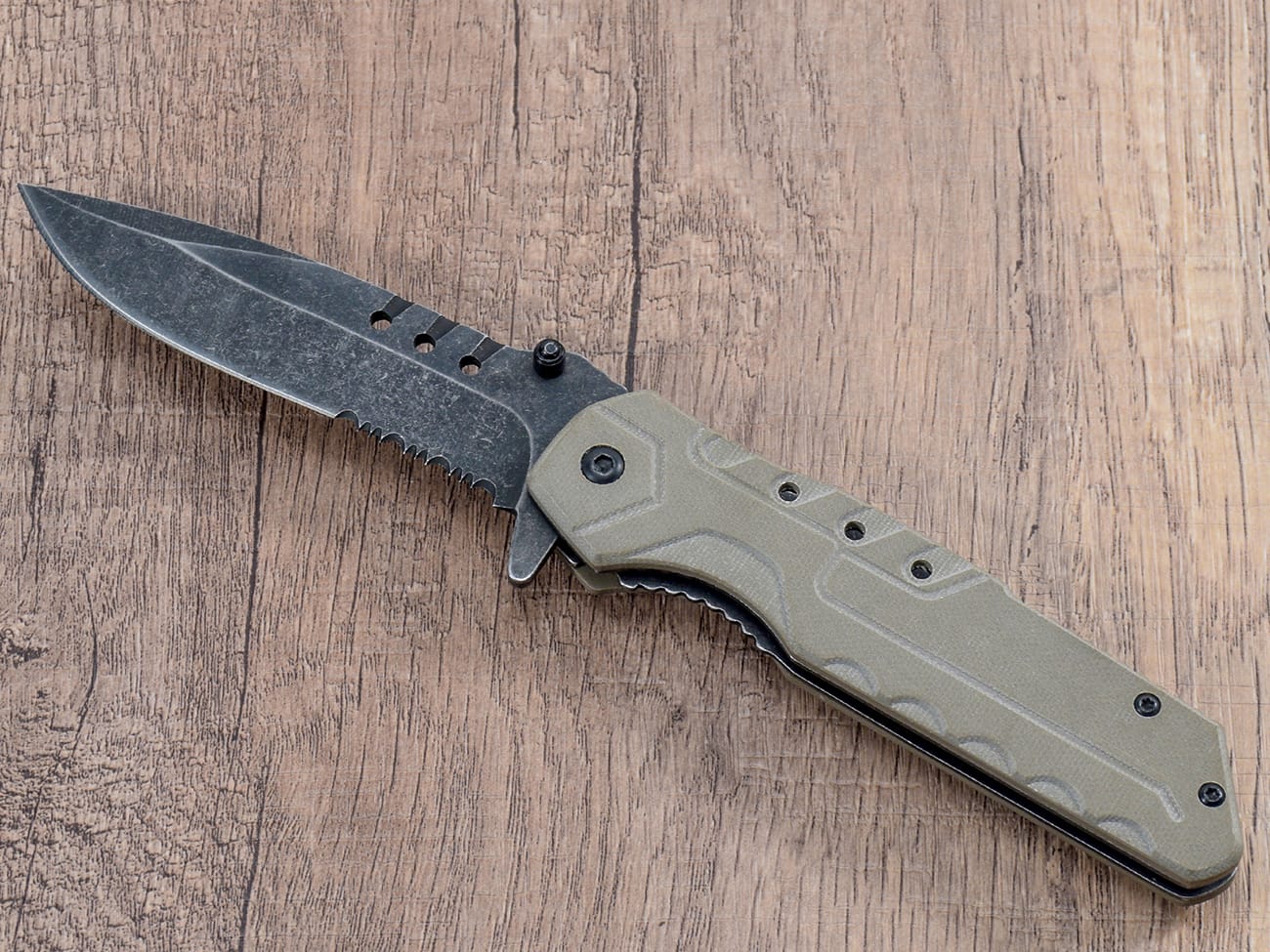Apakah Anda penggemar pisau saku yang ingin menyempurnakan keterampilan Anda dalam memegang pisau? Baik Anda pengguna berpengalaman atau baru mengenal dunia pisau lipat, mengetahui cara menutup pisau saku dengan kunci dengan benar sangat penting untuk keselamatan dan keawetan pisau. Dalam panduan lengkap ini, kami akan memandu Anda melalui proses tersebut langkah demi langkah, membahas berbagai jenis kunci dan menawarkan kiat ahli untuk memastikan Anda dapat menutup pisau saku dengan aman dan percaya diri.
Mengapa Menguasai Cara Menutup Pisau dengan Benar Itu Penting
Sebelum kita membahas secara spesifik, penting untuk memahami mengapa mempelajari cara menutup pisau saku dengan benar sangatlah penting. Teknik yang tepat tidak hanya mencegah cedera yang tidak disengaja tetapi juga menjaga integritas mekanisme pengunci dan bilah pisau Anda. Di akhir artikel ini, Anda akan memiliki pengetahuan untuk menangani pisau saku Anda seperti seorang profesional, memastikan keamanan dan memperpanjang umur alat berharga Anda.
Jenis-jenis Kunci Pisau Saku: Kenali Pisau Anda
Untuk menutup pisau lipat dengan aman, pertama-tama Anda perlu memahami jenis mekanisme kunci yang digunakannya. Mari kita bahas beberapa jenis kunci yang umum:
1. Apa itu Liner Lock?
Kunci liner adalah salah satu mekanisme penguncian paling populer yang ditemukan pada pisau saku modern. Mekanisme ini terdiri dari lapisan logam di dalam gagang yang terpasang di belakang bilah pisau yang terbuka, sehingga tidak dapat menutup.
2. Bagaimana cara kerja kunci bingkai?
Mirip dengan kunci liner, kunci rangka menggunakan sebagian gagang itu sendiri untuk mengunci bilah pada tempatnya. Desain ini sering dianggap lebih kuat daripada kunci liner.
3. Apa yang Membuat Lockback Unik?
Pisau Lockback memiliki bilah pengunci yang terpasang di tulang belakang yang membentuk lekukan pada gagang pisau. Desain klasik ini dikenal karena kekuatan dan keandalannya.
4. Memahami Mekanisme Kunci Tombol
Kunci kancing menggunakan tombol berpegas pada gagang untuk mengaktifkan dan menonaktifkan kunci. Kunci ini sering ditemukan pada pisau yang dapat dibuka secara otomatis atau dengan bantuan alat bantu.
5. Bagaimana Cara Kerja Kunci Poros?
Kunci Poros, yang dipopulerkan oleh Benchmade, menggunakan batang berpegas yang bergerak maju mundur dalam slot untuk mengunci bilah agar terbuka atau membiarkannya tertutup.
6. Apa yang Istimewa dari Kunci Kompresi?
Kunci kompresi Spyderco serupa dengan kunci liner tetapi mengaitkan tang bilah di antara liner dan pin penghenti, sehingga menawarkan kekuatan yang meningkat.
7. Apakah Ada Jenis Kunci Lain yang Perlu Diwaspadai?
Ya, ada beberapa jenis kunci lainnya, termasuk slipjoint (umum pada pisau saku tradisional), kunci cincin, dan kunci tri-ad, masing-masing dengan mekanisme uniknya sendiri.
Langkah Umum untuk Menutup Pisau Saku dengan Aman
Sekarang setelah kita membahas dasar-dasar jenis kunci, mari kita bahas langkah-langkah umum untuk menutup pisau saku dengan aman:
- Pegang pisau dengan benar: Pegang gagang pisau dengan kuat di tangan dominan Anda, dengan mata pisau mengarah menjauh dari Anda.
- Identifikasi mekanisme kunci: Cari jenis kunci dan temukan mekanisme pelepasannya.
- Lepaskan kunci: Gunakan ibu jari atau jari Anda untuk melepaskan kunci, tergantung pada jenisnya.
- Jaga jari Anda tetap bersih: Pastikan jari Anda menjauh dari jalur bilah pisau saat menutup.
- Pandu bilahnya: Gunakan tangan Anda yang lain untuk secara hati-hati mengarahkan bilah pisau kembali ke gagangnya.
- Amankan bilahnya: Pastikan bilah terpasang sepenuhnya dalam posisi tertutup.
- Periksa ulang: Pastikan bilah tertutup sepenuhnya dan kunci tidak terkunci.

Pisau lipat khusus dengan gagang kayu pakka dan klip saku, menunjukkan pentingnya pegangan yang tepat dan identifikasi kunci
Teknik Khusus untuk Berbagai Jenis Kunci
Mari kita selidiki teknik khusus untuk menutup berbagai jenis pisau saku pengunci:
Cara Menutup Pisau Liner Lock
- Pegang gagang pisau dengan kuat menggunakan tangan dominan Anda.
- Gunakan ibu jari Anda untuk mendorong kunci pelapis ke samping dan melepaskannya dari bilah pisau.
- Sambil tetap menjaga tekanan pada lapisan, lipat kembali bilah pisau secara hati-hati ke dalam pegangan menggunakan tangan Anda yang lain.
- Jauhkan jari Anda dari jalur bilah pisau saat menutup.
- Setelah bilah hampir tertutup, lepaskan kunci pelapis.
- Dorong perlahan bilah pisau hingga masuk sepenuhnya ke dalam gagang hingga tertutup sepenuhnya.
Menguasai Penutupan Kunci Bingkai
Menutup pisau kunci bingkai mirip dengan kunci liner:
- Pegang gagang pisau dengan erat.
- Gunakan ibu jari Anda untuk mendorong kunci rangka ke samping, sehingga bilah pisau pun terbebas.
- Lipat kembali bilah pisau dengan hati-hati ke dalam gagangnya menggunakan tangan Anda yang lain.
- Pastikan jari Anda menjauh dari jalur penutupan bilah pisau.
- Lepaskan kunci rangka saat bilah mendekati posisi tertutup.
- Dorong perlahan bilah pisau sepenuhnya ke dalam gagangnya.
Cara Tepat Menutup Pisau Lockback
Pisau Lockback memerlukan pendekatan yang sedikit berbeda:
- Pegang gagang pisau dengan kuat, dengan mata pisau mengarah menjauhi Anda.
- Temukan pelepas kunci, biasanya terdapat di bagian belakang pegangan.
- Tekan pelepas kunci dengan ibu jari Anda.
- Sambil tetap mempertahankan tekanan pada pelepasan, gunakan tangan Anda yang lain untuk melipat bilah pisau kembali ke dalam pegangan.
- Jauhkan jari Anda dari jalur bilah pisau.
- Setelah bilahnya hampir tertutup, Anda dapat melepaskan kuncinya.
- Dorong perlahan bilah pisau sepenuhnya ke dalam gagangnya.
Menutup Pisau dengan Kunci Tombol dengan Aman
Pisau dengan kunci kancing mudah ditutup:
- Pegang gagang pisau dengan erat.
- Temukan kunci tombol, biasanya di sisi pegangan.
- Tekan dan tahan tombol untuk melepaskan kunci.
- Sambil menahan tombol, gunakan tangan Anda yang lain untuk melipat bilah pisau ke dalam gagangnya.
- Jauhkan jari Anda dari jalur penutupan bilah pisau.
- Lepaskan tombol setelah bilah tertutup sepenuhnya.
Teknik Yang Benar Untuk Menutup Pisau Axis Lock
Pisau kunci sumbu memerlukan metode penutupan yang unik:
- Pegang gagang pisau dengan kuat menggunakan tangan dominan Anda.
- Gunakan ibu jari dan jari telunjuk untuk menarik kembali batang sumbu.
- Sambil memegang batang pisau, gunakan tangan lainnya untuk melipat bilah pisau ke dalam gagangnya.
- Jauhkan jari Anda dari jalur bilah pisau.
- Setelah bilah sebagian besar tertutup, Anda dapat melepaskan batang sumbu.
- Dorong perlahan bilah pisau hingga masuk sepenuhnya ke dalam gagang.
Pelajari lebih lanjut tentang jenis kunci pisau dan mekanismenya
Tips Keamanan Saat Menutup Pisau Saku
Apa pun jenis kuncinya, selalu ingat kiat keselamatan berikut:
- Memperhatikan: Jangan sekali-kali menutup pisau saat sedang tidak fokus.
- Jaga jari Anda tetap bersih: Selalu perhatikan posisi jari Anda saat berhadapan dengan bilah pisau.
- Gunakan dua tangan: Bila memungkinkan, gunakan kedua tangan untuk kontrol yang lebih baik.
- Rawat pisau Anda:Pisau yang dirawat dengan baik lebih mudah dan aman untuk ditutup.
- Berlatihlah secara teratur: Biasakan diri Anda dengan mekanisme penutupan pisau Anda.
- Periksa pisau Anda: Periksa secara teratur setiap kerusakan atau keausan yang dapat memengaruhi penutupan yang aman.
- Bersabarlah:Jangan pernah terburu-buru dalam proses penutupan.
Kesalahan Umum yang Harus Dihindari Saat Menutup Pisau Saku
Bahkan pengguna pisau yang berpengalaman pun dapat melakukan kesalahan. Berikut ini beberapa kesalahan umum yang perlu diwaspadai:
- Menerapkan terlalu banyak kekuatan:Gerakan yang lembut dan terkendali adalah kuncinya.
- Mengabaikan resistensi: Jika pisau tidak menutup dengan lancar, hentikan dan selidiki.
- Mengabaikan pemeliharaan: Pembersihan dan pelumasan secara teratur menjamin pengoperasian yang lancar.
- Menggunakan teknik yang salah:Setiap jenis kunci memerlukan pendekatan khusus.
- Menutup dengan satu tangan:Meskipun memungkinkan, secara umum lebih aman menggunakan kedua tangan.
- Mempercepat proses:Luangkan waktu Anda untuk menutup pisau dengan aman.
- Mengabaikan keausan: Segera ganti atau perbaiki bagian yang aus.
Merawat Pisau Saku Anda Agar Tetap Rapi
Pisau saku yang dirawat dengan baik tidak hanya lebih aman tetapi juga lebih menyenangkan untuk digunakan. Berikut ini beberapa kiat untuk menjaga pisau Anda dalam kondisi prima:
- Bersihkan secara teratur: Singkirkan kotoran dan debu yang dapat mengganggu mekanisme penguncian.
- Lumasi bagian yang bergerak: Oleskan sedikit minyak pisau ke poros dan kunci.
- Kencangkan sekrup yang longgarPastikan semua perangkat keras terpasang dengan aman.
- Mengasah pisau: Pisau yang tajam kecil kemungkinannya tergelincir saat menutup.
- Periksa kerusakanPeriksa kunci dan bilah untuk melihat tanda-tanda keausan atau kerusakan.
- Simpan dengan benar: Simpan pisau Anda di tempat yang kering saat tidak digunakan.
- Ikuti panduan produsen: Patuhi petunjuk perawatan khusus untuk model pisau Anda.
Jelajahi koleksi pisau saku berkualitas tinggi kami
Mengajar Orang Lain: Mewariskan Pengetahuan Anda tentang Keamanan Pisau
Saat Anda sudah mahir menutup pisau lipat dengan aman, pertimbangkan untuk berbagi pengetahuan Anda dengan orang lain. Berikut ini cara efektif mengajarkan cara aman menggunakan pisau:
- Tunjukkan teknik yang tepat: Tunjukkan cara yang benar untuk menutup berbagai jenis kunci.
- Tekankan keselamatan: Tekankan pentingnya menjauhkan jari dari bilah pisau.
- Dorong praktik: Memungkinkan peserta didik berlatih di bawah pengawasan.
- Jelaskan mekanisme kunci: Bantu orang lain memahami cara kerja berbagai kunci.
- Menyorot kesalahan umum: Tunjukkan kesalahan yang harus dihindari.
- Mempromosikan kepemilikan yang bertanggung jawab: Diskusikan tentang perawatan dan pemeliharaan pisau yang tepat.
- BersabarlahIngatlah bahwa belajar membutuhkan waktu dan pengulangan.
Memilih Pisau Saku yang Tepat untuk Kebutuhan Anda
Memilih pisau saku dengan mekanisme kunci yang sesuai dengan kebutuhan dan tingkat keterampilan Anda sangatlah penting. Pertimbangkan faktor-faktor berikut:
- Penggunaan yang dimaksudkan: Tugas yang berbeda mungkin memerlukan jenis kunci yang berbeda.
- Ukuran dan kekuatan tangan: Beberapa kunci mungkin lebih mudah dioperasikan untuk pengguna tertentu.
- Preferensi pembawa: Pertimbangkan bagaimana pisau akan dibawa dan diakses.
- Pembatasan hukum: Ketahui undang-undang setempat mengenai jenis pisau dan panjang bilah pisau.
- Reputasi merek: Pilih pisau dari produsen terkemuka yang dikenal akan kualitas dan keamanannya.
- Kekuatan kunciPertimbangkan ketahanan kunci sesuai tujuan penggunaan Anda.
- Kemudahan perawatan: Beberapa jenis kunci mungkin lebih mudah dibersihkan dan dirawat dibandingkan lainnya.
Lihat pilihan pisau lipat kami dengan berbagai jenis kunci
Kesimpulan: Menguasai Penanganan Pisau Saku yang Aman
Mempelajari cara mengunci pisau lipat dengan kunci dengan aman merupakan keterampilan penting bagi setiap penggemar pisau atau orang yang menggunakannya sehari-hari. Dengan memahami berbagai jenis kunci, mempraktikkan teknik yang tepat, dan merawat pisau, Anda akan memastikan keselamatan dan keawetan alat berharga Anda. Ingat, kesabaran dan perhatian terhadap detail adalah kunci saat menangani pisau apa pun.
Poin-poin Utama:
- Pahami mekanisme kunci pisau Anda sebelum mencoba menutupnya
- Selalu jaga jari Anda agar tidak mengenai jalur bilah pisau saat menutup
- Gunakan kedua tangan untuk kontrol dan keamanan maksimal
- Rawat pisau Anda secara teratur agar berfungsi dengan baik
- Berlatihlah teknik penutupan yang tepat untuk membangun memori otot
- Pilihlah pisau dengan jenis kunci yang sesuai dengan kebutuhan dan kemampuan Anda
- Bagikan pengetahuan Anda untuk mempromosikan keamanan pisau di antara orang lain
Dengan mengikuti panduan ini dan terus mengasah keterampilan Anda, Anda akan diperlengkapi dengan baik untuk menangani pisau saku apa pun dengan aman dan percaya diri. Selamat menangani pisau dengan aman!




